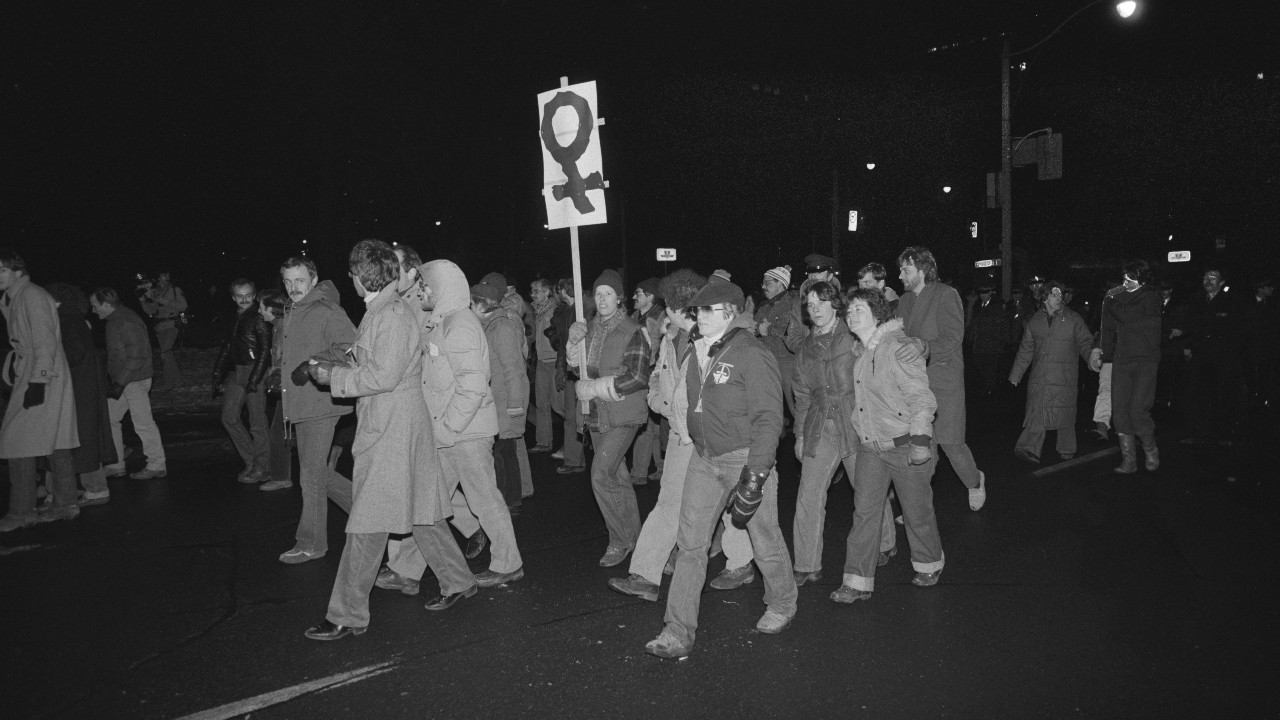A snapshot of Toronto’s LGBTQ+ history, in just five city blocks
Follow the route of 1974’s Pride March to see where LGBTQ+ rights were fought for and won in the city.

Every June, Pride Toronto hosts a series of events that culminate in a grand parade downtown. Pride events and marches for LGBTQ+ rights are not new to the city — they have existed in some form since 1971, when a Gay Picnic was held on Hanlan’s Point Beach on the Toronto Islands.
On Aug. 17, 1974, the Gay Alliance Toward Equality held one of the city’s first Gay Pride marches. People walked from Allan Gardens Conservatory to Queen’s Park, calling to be treated as equal citizens.
By following their route — which was just five city blocks — we can spot several significant locations in the fight for LGBTQ+ rights. It’s a snapshot of resistance and community in Toronto, traced out almost 50 years ago.
The early days
The 1974 march began at the Allan Gardens Conservatory at the intersection of Carlton St. and Jarvis St. The location was not without significance: According to historian Stephen Maynard, the Gardens had been a cruising site for men seeking anonymous sex with other men throughout the 20th century, although these encounters were sometimes ended by police patrolling the area.

The Gardens were also where the Irish writer Oscar Wilde, now regarded as an LGBTQ+ icon, gave a speech as part of his 1882 North American lecture tour, just three years before he was imprisoned in England for his sexuality. A century later the Gardens hosted one of the first academic conferences for LGBTQ+ historians, the Wilde ’82 Lesbian and Gay History Conference.
In an essay for the book Any Other Way: How Toronto Got Queer, heritage planner Tatum Taylor writes that the Gardens are “one of the city’s oldest contested sexualized spaces, where tensions between public and private, social liberalism and civic constraint, have played out on City-owned land for generations.”
It takes a Village
The protestors marched west along Carlton St., passing Church St. on their way.

The neighborhood surrounding the intersection of Church St. and Wellesley St. — often called the Gay Village or the Village — had already become a haven for LGBTQ+ people by 1974, although much of the activity was underground. Bars, restaurants, and bathhouses quietly had catered to the community for decades prior, and began gradually advertising themselves more openly throughout the 1970s and ’80s.
Today, the Village is home to numerous landmarks, including the 519 community centre, which offers legal advocacy and resources to LGBTQ+ people in the city, and the world’s oldest extant LGBTQ+ bookstore, Glad Day Bookshop.
The bathhouse raids galvanize a movement
The ’74 march continued west to College St. and Yonge St., one of the city’s vital arteries that would become notable in the struggle for equality following the infamous bathhouse raids seven years later.
On Feb. 5, 1981, police stormed four of the city’s male bathhouses. Codenamed “Operation Soap,” the crackdown resulted in almost 300 men getting arrested and charged with being found in a common baudy house.

Anger roiled through the city, and the following night 3,000 people marched down Yonge St., past College to the police’s 52 Division building on Dundas St. W. The fires of rebellion were relit.
The 1980s saw a wave of change and protest in Toronto and throughout the country. As the AIDS epidemic grew, a series of victories were won, starting with a reinvigorated Pride Day attended by 1,500 people just four months after the bathhouse raids, in June. But it would be another decade before Pride events were officially endorsed by the city.
Rights enshrined into law
The 1974 march ended at the provincial legislature at Queen’s Park. Protestors called for equal rights for LGBTQ+ Canadians — a demand that would be made repeatedly in the years that followed.
Progress was achieved slowly, but 1986 marked two major milestones: The Ontario Human Rights Code was amended to clearly prohibit discrimination based on sexual orientation; and attendance for Toronto Pride reached 10,000 for the first time.

The wins kept coming, with similar amendments to human rights legislation in other provinces and a watershed federal ruling in 1995, when the Supreme Court outlawed discrimination based on sexual orientation across the country. The Canadian Human Rights Act was updated to reflect this ruling the following year.
Then, on June 10, 2003, Canada’s first same-sex marriage was officiated in Toronto, when Michael Stark and Michael Leshner were wed just hours after the Ontario courts ruled that same-sex marriage in the province was permissible.
Today, Toronto’s annual Pride events in June are a time of celebration. The area surrounding the original 1974 march route thrums with excitement and a sense of shared belonging. But that doesn’t mean equality has been completely achieved.
Research shows that LGBTQ+ Canadians continue to experience barriers to health care and employment, at a time when transphobia is on the rise. The marches of the 1970s and ’80s may be history now, but their goals have not yet been fully realized.
This is an updated version of a story originally published in 2022. For more on the history of LGBTQ+ activism in Toronto, check out the book Any Other Way: How Toronto Got Queer, available from Coach House Books.
Code and markup by Kyle Duncan. ©Torontoverse, 2023